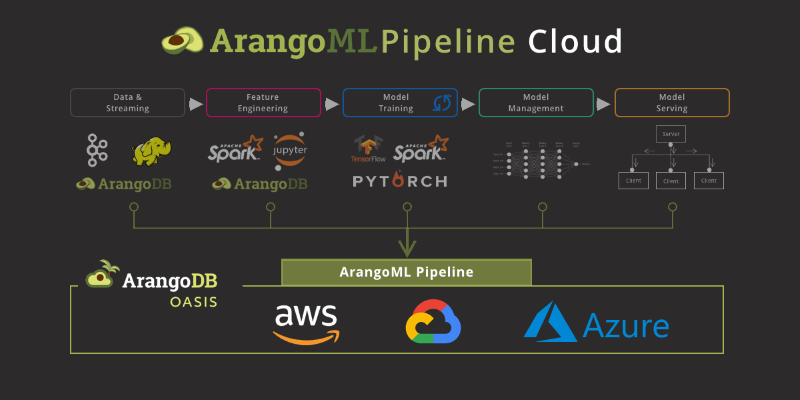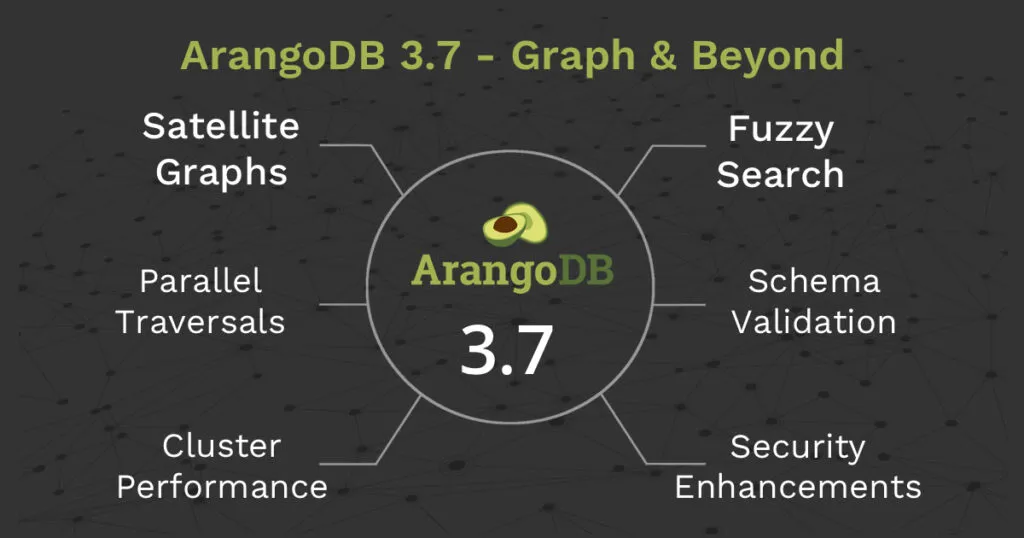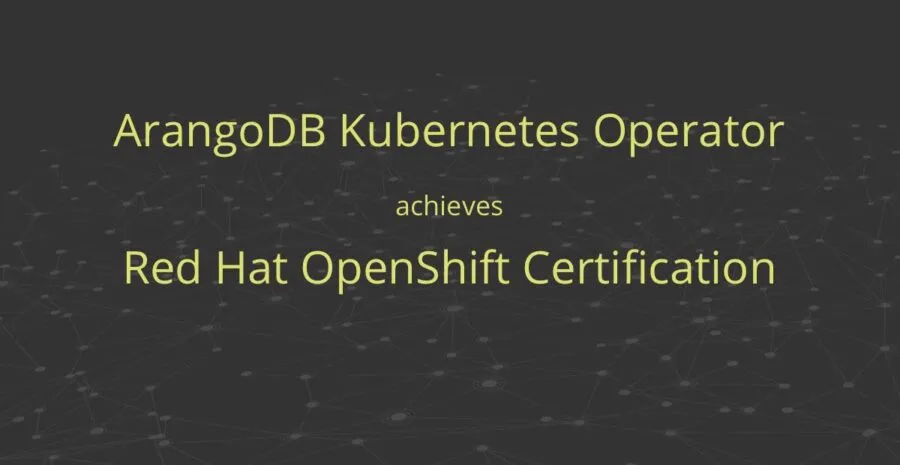ArangoML Series: Multi-Model Collaboration
Estimated reading time: 8 minutes
Multi-Model Machine Learning
This article looks at how a team collaborating on a real-world machine learning project benefits from using a multi-model database for capturing ML meta-data.
The specific points discussed in this article are how:
- The graph data model is superior to relational for ML meta-data storage.
- Storing ML experiment objects is natural with multi-model.
- ArangoML promotes collaboration due to the flexibility of multi-model.
- ArangoML provides ops logging and performance analysis.

ArangoML Series: Intro to NetworkX Adapter
Estimated reading time: 3 minutes
This post is the fifth in a series of posts introducing the ArangoML features and tools. This post introduces the NetworkX adapter, which makes it easy to analyze your graphs stored in ArangoDB with NetworkX.
In this post we:
- Briefly introduce NetworkX
- Explore the IMDB user rating dataset
- Showcase the ArangoDB integration of NetworkX
- Explore the centrality measures of the data using NetworkX
- Store the experiment with arangopipe
This notebook is just a slice of the full-sized notebook available in the ArangoDB NetworkX adapter repository. It is summarized here to better fit the blog post format and provide a quick introduction to using the NetworkX adapter.

ArangoML Part 4: Detecting Covariate Shift in Datasets
Estimated reading time: 1 minute
This post is the fourth in a series of posts introducing ArangoML and showcasing its benefits to your machine learning pipelines. Until now, we have focused on ArangoML’s ability to capture metadata for your machine learning projects, but it does much more.
In this post we:
- Introduce the concept of covariate shift in datasets
- Showcase the built-in dataset shift detection API

ArangoML Part 3: Bootstrapping and Bias-Variance
Estimated reading time: 2 minutes
This post is the third in a series of posts about machine learning and showcasing the benefits ArangoML adds to your machine learning pipelines. In this post we:
- Introduce bootstrapping and bias-variance concepts
- Estimate and analyze the variance of the model from part 2
- Capture the metadata for this activity with arangopipe

ArangoML Part 2: Streamlining Machine Learning Workflows
Estimated reading time: 1 minute
This post is the second in a series of posts about machine learning and showcasing the benefits ArangoML adds to your machine learning pipelines. In this post we:
- Introduce machine learning concepts
- Demonstrate basic model building
- Log a model building activity with arangopipe

ArangoML Part 1: Where Graphs and Machine Learning Meet
Estimated reading time: 4 minutes

This post is the first in a series of posts introducing ArangoML and showcasing its benefits to your machine learning pipelines. In this first post, we look at what exactly ArangoML is, with later posts in this series showcasing the different tools and use cases.
(more…)ArangoDB 3.7 – A Big Step Forward for Multi-Model
Estimated reading time: 7 minutes

When our founders realized that data models can be features, we at ArangoDB set ourselves the big goal of developing the most flexible database. With today’s GA release of ArangoDB 3.7, the project reached an important milestone on this journey.
(more…)Do Graph Databases Scale? Yes? No? Let’s see!
Estimated reading time: 10 minutes
Graph Databases are a great solution for many modern use cases: Fraud Detection, Knowledge Graphs, Asset Management, Recommendation Engines, IoT, Permission Management … you name it.
All such projects benefit from a database technology capable of analyzing highly connected data points and their relations fast – Graph databases are designed for these tasks.
But the nature of graph data poses challenges when it comes to *buzzword alert* scalability. So why is this, and are graph databases capable of scaling? Let’s see…
(more…)Red Hat Certifies ArangoDB Kubernetes Operator
Estimated reading time: 2 minutes

Hi all!
I think this year has thrown us for quite a loop, full of unexpected occurrences, both joyous and difficult. With everything going on in the world at the moment, we feel it’s more important than ever to celebrate what you can .
So with that, just a quick note from us that our Kubernetes Operator has achieved Red Hat OpenShift Operator Certification. And as far as we can tell, this means we are the first graph database to reach full certification for Red Hat OpenShift. Huzzah!
(more…)Best Practices for AQL Graph Queries
Estimated reading time: 8 minutes

The ArangoDB Query Language(AQL) was designed to accomplish a few important goals, including:
- Be a human-readable query language
- Client independency
- Support complex query patterns
- Support all ArangoDB data models with one language
The goal of this guide is to ensure Read more
- « Previous
- 1
- 2
- 3
- Next »
Get the latest tutorials,
blog posts and news:
Thanks for subscribing! Please check your email for further instructions.
